The garden of forking memes: how digital media distorts our sense of time
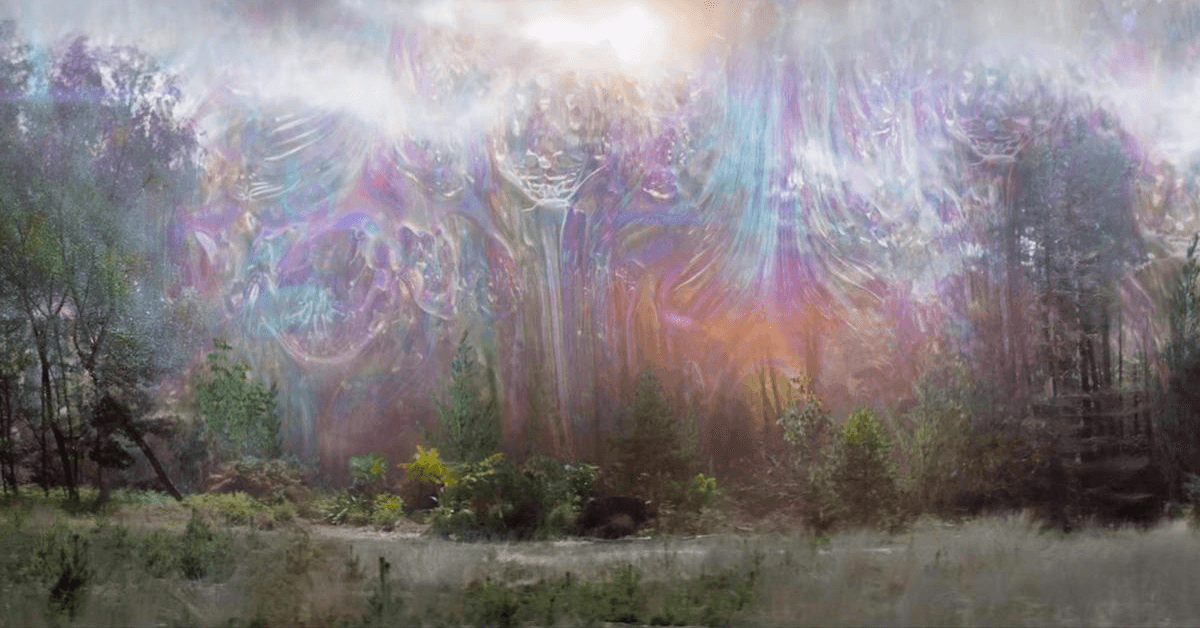
My Dad first gave me The Talk when I was 12 or 13. We were driving down the freeway, and he asked me if I’d ever been judged or harassed for being black. I remember this conversation vividly because my family doesn’t talk too much about their personal experiences with racial discrimination. For the most part, they tend to focus on their blessings and joys and triumphs. This way of remembering runs deep. Both my grandmother and her father before her engaged in a “long-standing practice of editing [their] memory, an artful forgetting for the sake of affirming the family’s self-worth” and moving forward with their heads held high.1
In my grandma’s time, families had more of a choice about what to pass onto their kids. They could leave certain things out and emphasize the good in the hope that doing so would create a better future. Today, digital media has taken that option off the table. The internet has flattened the vast archive of the past and made history unprecedentedly (and unrelentingly) immediate. No matter what my grandma chose to share with me about her upbringing, I can go online and find all kinds of information about the world she lived in, the hardships she might’ve endured. The distant past is brought back to life in the digital realm, as if no time has passed at all.
Digital databases are unparalleled memory machines that have radically transformed how information and stories flow between grandparents and children, students and teachers, politicians and voters, journalists and citizens. What Marshall McLuhan called the perfect memory of computers has, in our time, spawned a garden of competing narratives and conceptions of the past/present/future. Digital media serves up an inhumanly large corpus of data that becomes raw material for new subcultures, ideologies, and alternative histories. In today’s chaotic media environment, not even a global pandemic can restore a shared sense of Reality.
Like Louisa Banks in the 2016 film Arrival, we are all trying to figure out how the “alien language” of digital tech has transformed our psyches and warped our sense of time. How did the internet disrupt 20th century timekeeping systems and spark an insurgence of alternative historical narratives? How do old media institutions try (and fail) to keep up with the narratives of online subcultures? How does the immediate accessibility of so many alt histories undermine our ability to create shared visions of the future? And how might a more ecological awareness of the internet help us adapt to our disorienting digital time machines?
Digital de-synchronization & the tribalization of time
How did digital media disrupt 20th century timekeeping systems and spark an insurgence of alternative historical narratives?
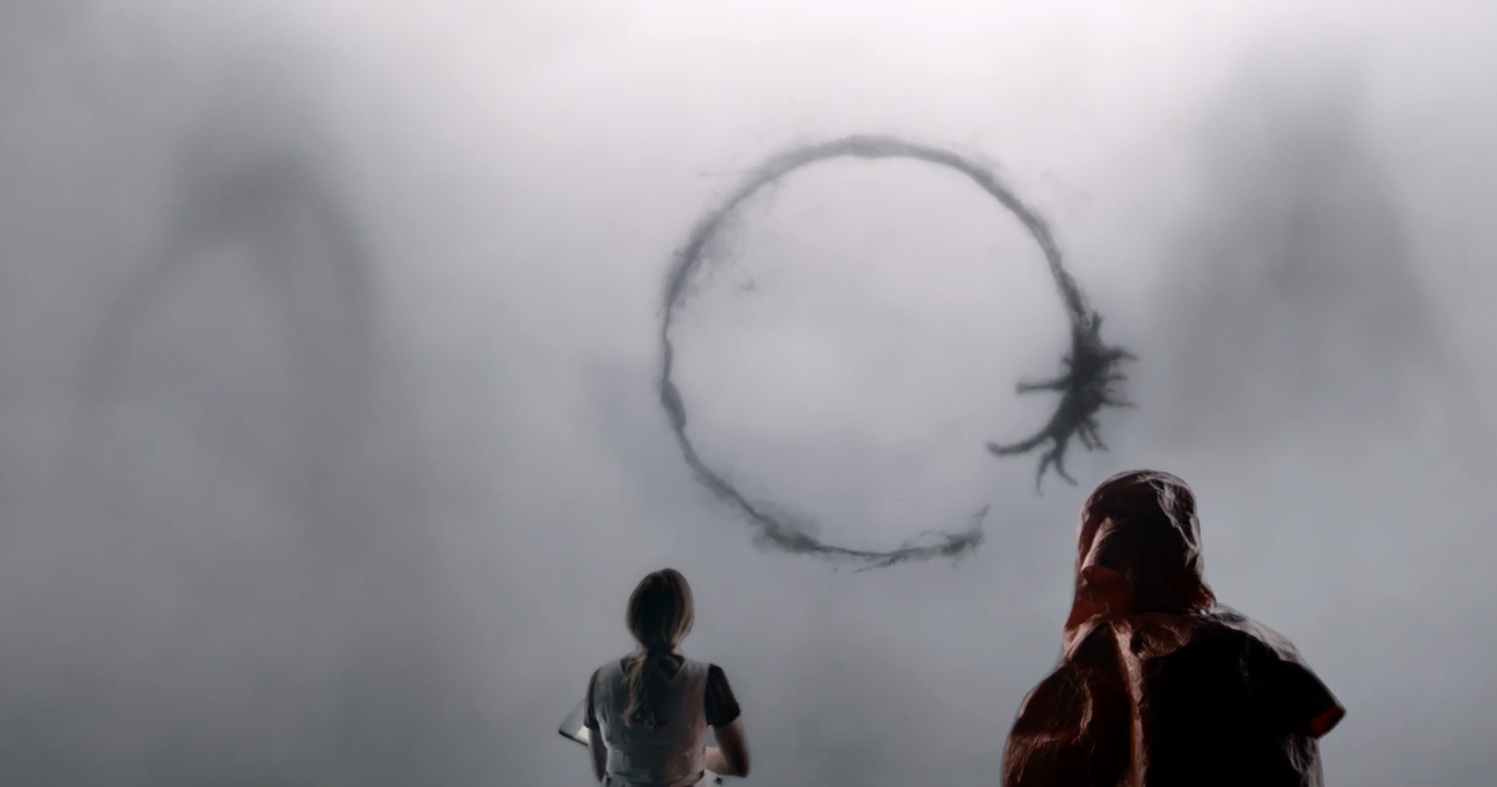
Arrival (2016)
In the 19th and 20th centuries, innovations like the telegraph, time zones, radio, and television led to new patterns of mass connectivity and synchronization. Time was subdivided into smaller and smaller units, allowing us to achieve unprecedented levels of coordination at scale. But in our own century, digital media is fracturing our collective experience of clock time. “By the 1930s,” says Venkatesh Rao, “we had grid-synchronized electric clock time, which was an important move because we went from producing time in clock towers and sun dials to producing time in a central location and distributing it via a grid, so that it was piped into your home like water or electricity. By the 1940s, we were distributing time over the oceans. By the 1980s, we had GPS … This trend has come to its logical conclusion because we all live inside a cage of time made up of 32 satellites orbiting Earth.”
In the digital age, everything from the evening news to the 9 – 5 workday has been freed from the cage of industrial era timekeeping. As long as you have an internet connection, you can march to the beat of your own second hand.
This shift has been disorienting for the people who lived through it. My parents, for instance, still have a very hard time remembering that Netflix shows do not “come on” at a certain time. This seemingly trivial confusion points to deeper psychological differences between children of the television and children of the internet. Until the invention of “time shifting” and DVR, television viewers were beholden to a schedule that was designed by faraway producers/timekeepers. As a rule, twentieth century time was imposed on people from the top-down. Twenty-first century time is a bottom-up choose your own adventure story that allows people to make their own time machines and live anywhen.
Narrative is an unavoidably temporal technology; the Database is indifferent to time. The experience of Database-time is of an undifferentiated blob. Having trouble with the flow of time? Maybe it’s not just the pandemic. Maybe it's because we live in the Database and in the Database ordinary time is irrelevant.
The de-centralization of timekeeping brought about by digital media harkens back to a much older style of measuring time. Before the invention of the telegraph, there was no way to instantaneously synchronize timekeeping devices across long distances. No time zones, no universal standard against which clock towers could be evaluated for accuracy. Timekeeping was more an art than a science. Each village emitted its own time zone. Much like the townships of old, every internet community has its own “subjective time zone”.
The disruption of the old timekeeping regime created a void that’s being filled by new online communities, cliques, and cults. Whereas the industrial schedule provided a sense of structure and stability and continuity, D.I.Y. timekeeping often feels aimless and disorienting and uncertain. People are seeking out groups and ideologies that put them “back in time”, and many internet subcultures do exactly that.
Thanks to the “perfect memory” of digital media, internet subcultures are able to create their own visions of past, present, and future. The internet has freed them from the top-down schedules and narratives of mass media. With nearly all of recorded history at their fingertips, they can cherry-pick interesting scraps of information from the archives and construct new grand narratives with unprecedented ease. And so, digital media has enabled a wave of “deepwater drilling” for obscure texts and long-forgotten histories — fueling an explosion of new political coalitions that bear little resemblance to the party lines of the last century. In a 2019 interview with the popular philosophy YouTuber Contrapoints, Ezra Klein reflected on how digital media has re-shaped the ideological landscape over the last decade:
It’s amazing to me how much esoteric ideological and social theory is back operating within near-to-popular discourse now. As somebody who’s kind of a nerd for a lot of this stuff, I find it lovely, but also I’m really stunned to see people discussing tankies and neoliberalism and anarchism. It seems to me that, through the way Reddit and YouTube and social media work, there’s such an emphasis on creating distinctions and communities, and it’s just created an explosion of interest in ideological sub-groupings that had been completely forgotten. I started in politics in the early ‘00s, and it just didn’t have this flavor. If you were a kid looking to get into politics then, you couldn’t find these incredibly fine-grained sub-groupings to become part of and then start meme-ing yourself into a community with. It really feels different to me than when I was growing up in it.
The explosion of subcultures and grand narratives that Ezra Klein describes can be seen in the surreal ideological memes that often show up on Twitter and Instagram. These memes are extremely dense cultural talismans that accumulate layers and layers of meaning/allusion over time. Like the jargon of academia, memes look like nonsense to outsiders but facilitate deep communication between members of a subculture.

A selection of ideology memes from Twitter and Joshua Citarella's 2018 Instagram ethnography. "Some of the teenagers who ran Pepe meme accounts in 2016 are now young Marxist scholars who spend their evenings gaming and chatting about Hegel in Discord servers with PhD students," says Citarella. "I wouldn't believe it myself if I hadn't met them."
Each subculture has an implicit understanding of its “ideological conversion funnel”. This phrase, borrowed from digital marketing, refers to the stages that people go through on the way to becoming a True Believer, from first contact with a mysterious meme to full-on understanding of a grand narrative. The conversion process is known to the in-group, but largely illegible to outsiders. Unlike offline communities, these subcultures aren’t always neatly labeled, and people don’t consciously choose to join them. The “gravity” or “current” of social media algorithms pulls people into orbit around ideological sub-groups. Algorithms are the riverbed, and users are the water.
In the early days of the internet, the Web’s surface was relatively smooth and its “gravitational force” was weak. You could random walk without getting sucked into any black holes. During the 2010s, social media platforms “dug into the Web surface, dragging activities down their slopes … As a result of this magnetic-like attraction, caused by the web slope, Internet users slowly slide down the slope in a digital drift,” writes Louise Druhle. The virus has likely accelerated this process because it’s pushed so much cultural activity online.
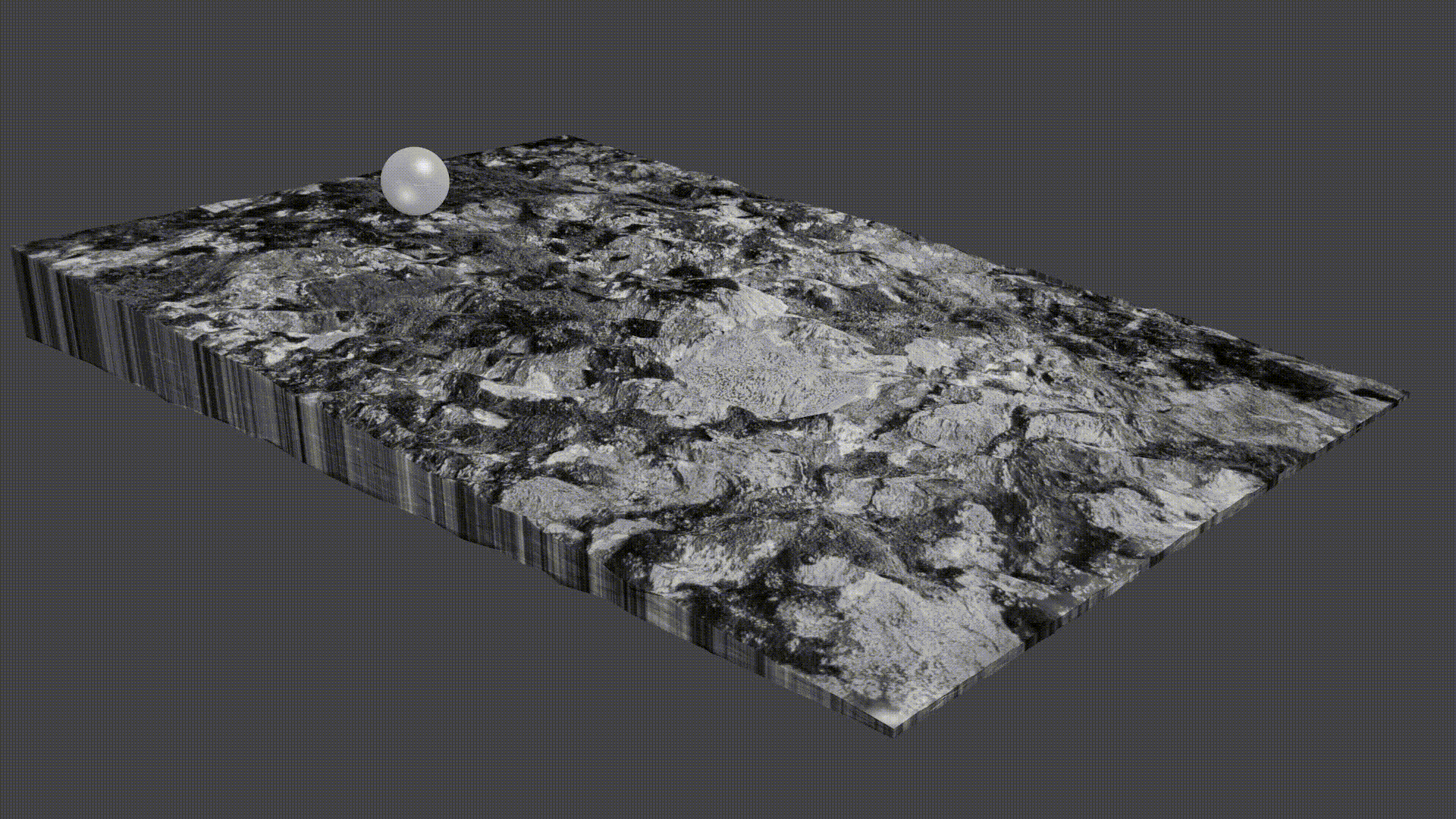
The slope and gravity of a media platform exerts an influence on browsing behavior. Source: Critical Atlas of Internet
Sometimes you can sense the current pushing you this way or that. Other times, you’re totally in the dark. It’s certainly possible to swim against the current, but it takes a lot of effort and awareness. You usually end up in a digital “neighborhood” without quite remembering how you got there. The veterans of a particular subculture are its timekeepers, and they live in its present. They’ve seen enough people “come of age” that they have a sense of the well-trodden routes and the traps people tend to fall into.
Unless you’re a data scientist inside a social media company, it’s difficult to see how this process unfolds from the outside. But that hasn’t stopped some people from trying. An anonymous anthropologist called @MenanderSoter, for example, has created a tool that makes it easy to explore visualizations of Twitter subcultures. Our armchair investigator has done their best to label the clusters that emerged from their network analysis. Similarly, there are people on TikTok who specialize in trying to decode the algorithms and understand how subcultures coalesce.
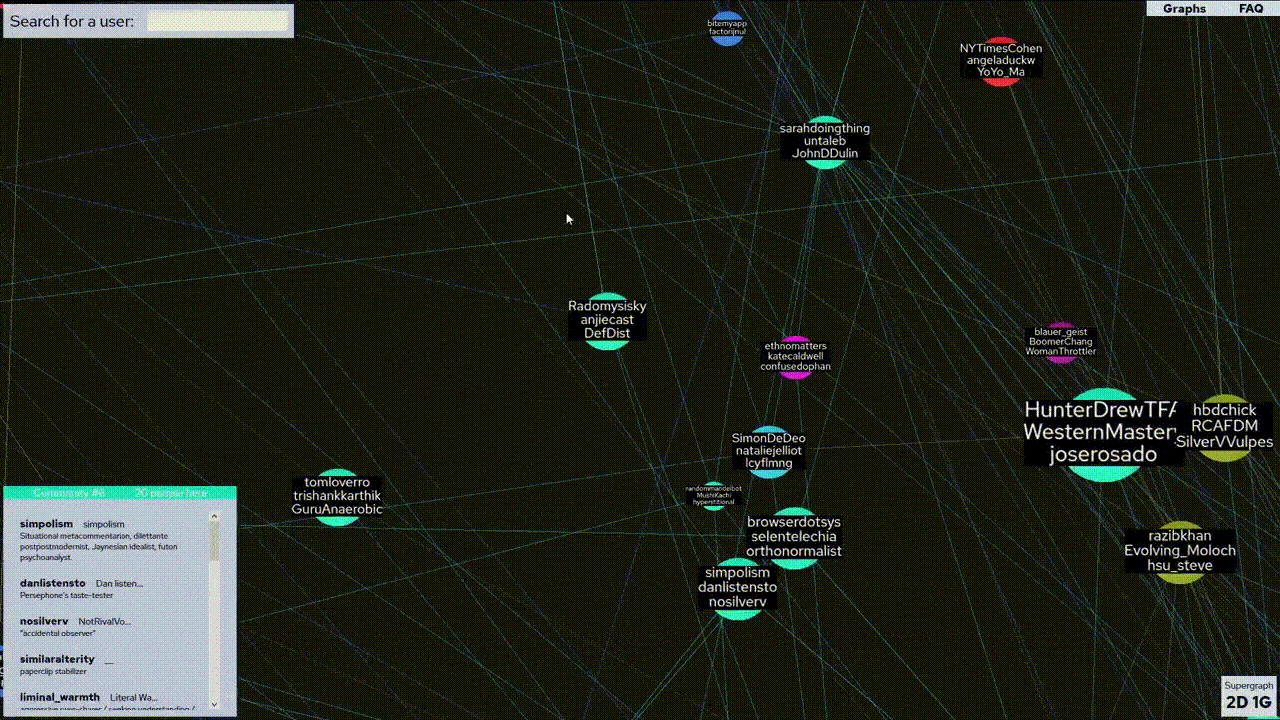
Visualizing Twitter sub-groups. Source: twitterverse.net
People who spend a lot of time exploring these subcultures feel like they can see into the future, and for good reason. What happens online often shows up in the headlines weeks, months, or even years later. The internet has become the petri dish of culture — the soil in which new movements and novel conversations find root. Next, we’ll explore how this time lag has transformed the cultural landscape and eroded the power of old media institutions.
When time zones collide
How do establishment institutions try (and fail) to keep up with the narratives of internet subcultures?
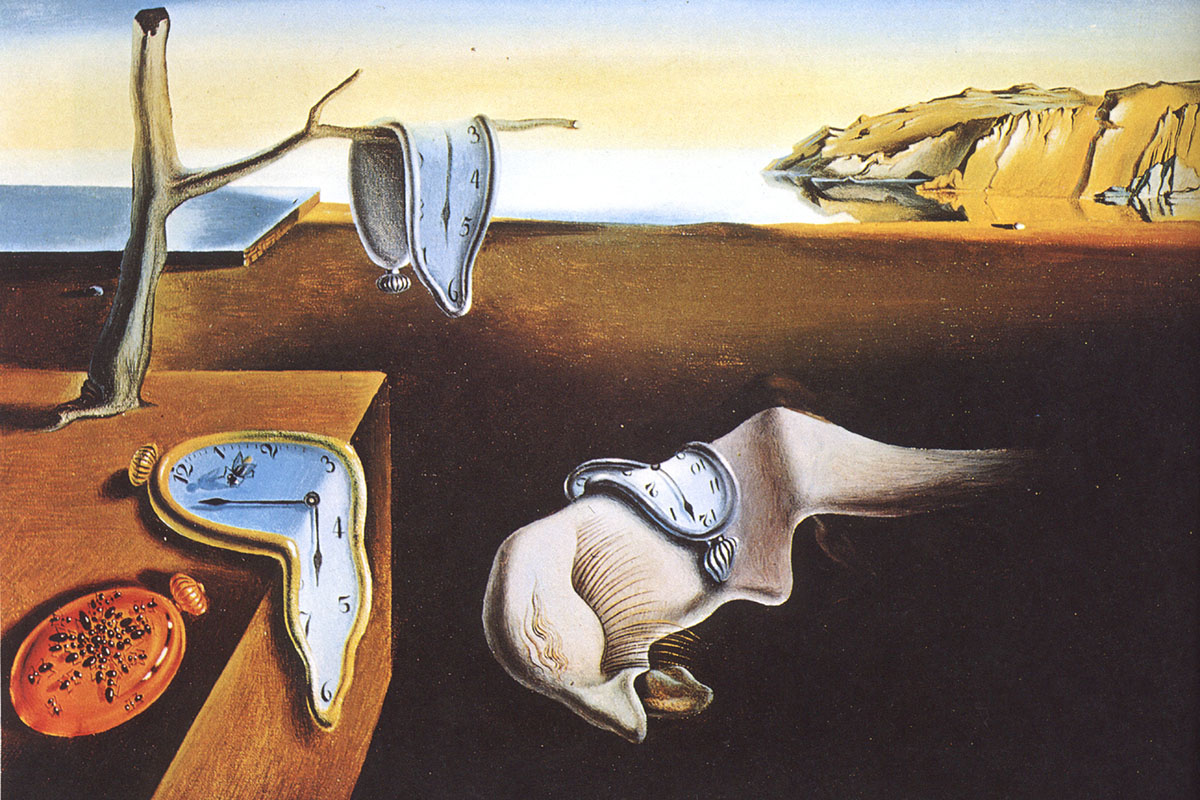
The Persistence of Memory (1931), Salvador Dalí
When an internet subculture grows large enough, it often gets spotlighted in the mainstream media. But old-school media outlets watch internet culture on tape delay. By the time they identify a subcultural tribe, it's usually already splintered or evolved into something different. This cycle has played out a number of times over the last decade, but it seems to have picked up steam since the Gamergate controversy of 2014. The time lag between Extremely Online conversations and mainstream newspapers/TV reveals that 20th century institutions no longer set the pace. They're getting sucked into the subjective time zones of internet subcultures.
Some examples: Vox’s coverage of a political movement called accelerationism, the New York Times’ coverage of the Intellectual Dark Web and Weird Catholic Twitter, the recent SXSW film about a meme-turned-lifestyle called “TFW no GF”, widespread coverage of incels between 2017 – 2019, Hillary Clinton’s 2016 speech on the Alt Right, and the New York Times’ recent spat with the popular rationalist blog Slate Star Codex.

TFW mainstream media shines a spotlight on internet subcultures.
As the line between “internet culture” and “Culture” gets increasingly blurry, Old Media gets increasingly confused. Online tribes are basically proto-political coalitions, sprouting in the graveyard of America’s zombiefied corporate media. This is, of course, a huge gravitational shift in the landscape of power. In 2004, an anonymous George W. Bush official famously told the New York Times:
We’re an empire now, and when we act, we create our own reality. And while you’re studying that reality — judiciously, as you will — we’ll act again, creating other new realities, which you can study too, and that’s how things will sort out. We’re history’s actors … and you, all of you, will be left to just study what we do.
Sixteen years later, it’s clear that digital media has made things a little more complicated. The old guard is now left to study the activities and new realities of online tribes. These groups are constantly churning out unsanctioned narratives that attract large followings, and that’s how things have sorted out. As in the media revolution sparked by Gutenberg, the powers that be are not too pleased about losing their monopoly over the technologies of reality creation. In 1673, one anonymous commentator captured the spirit of elite frustration with the new printing press when he said: “every man thinks what he lists, speaks what he thinks, writes what he speaks, and prints what he writes…carried on by a kind of frantick Figgary.”2
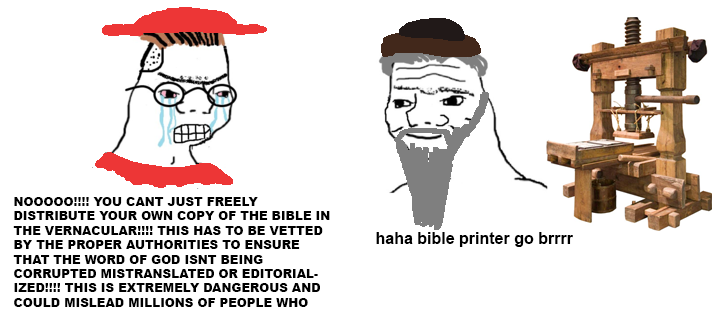
The conflict between old and new media is in many ways a dispute over who gets to control the “clocks” we live by; who gets to set the pace; who gets access to the technologies that make it easy to synchronize (or de-synchronize) large groups people. This is just the latest entry in a long history of disputes between groups that had different visions of how to mark time. Clocks may seem innocuous, but they’re never ideologically neutral. Timekeeping doesn’t just happen. It occurs within a complex system of institutional policies, financial instruments, and military technologies. Clocks are the deceptively simple product of an intricate political arrangement. I’d even go so far as to say that politics is the art and science of creating the time machines that we inhabit — the calendars that help us orient and coordinate as we journey from cradle to grave.
(To give just one example: when I visited Chicago’s Halim Time & Glass Museum earlier this year, I learned that during the French Revolution, the founders of the Republic “were intrigued by the possibility of using timekeeping as a tool of reform. In particular, they wanted to eliminate the hold religion and royalty had over French life. They hoped to achieve this goal by replacing the Gregorian calendar with a new Republican calendar by adopting a new decimal time system.”)
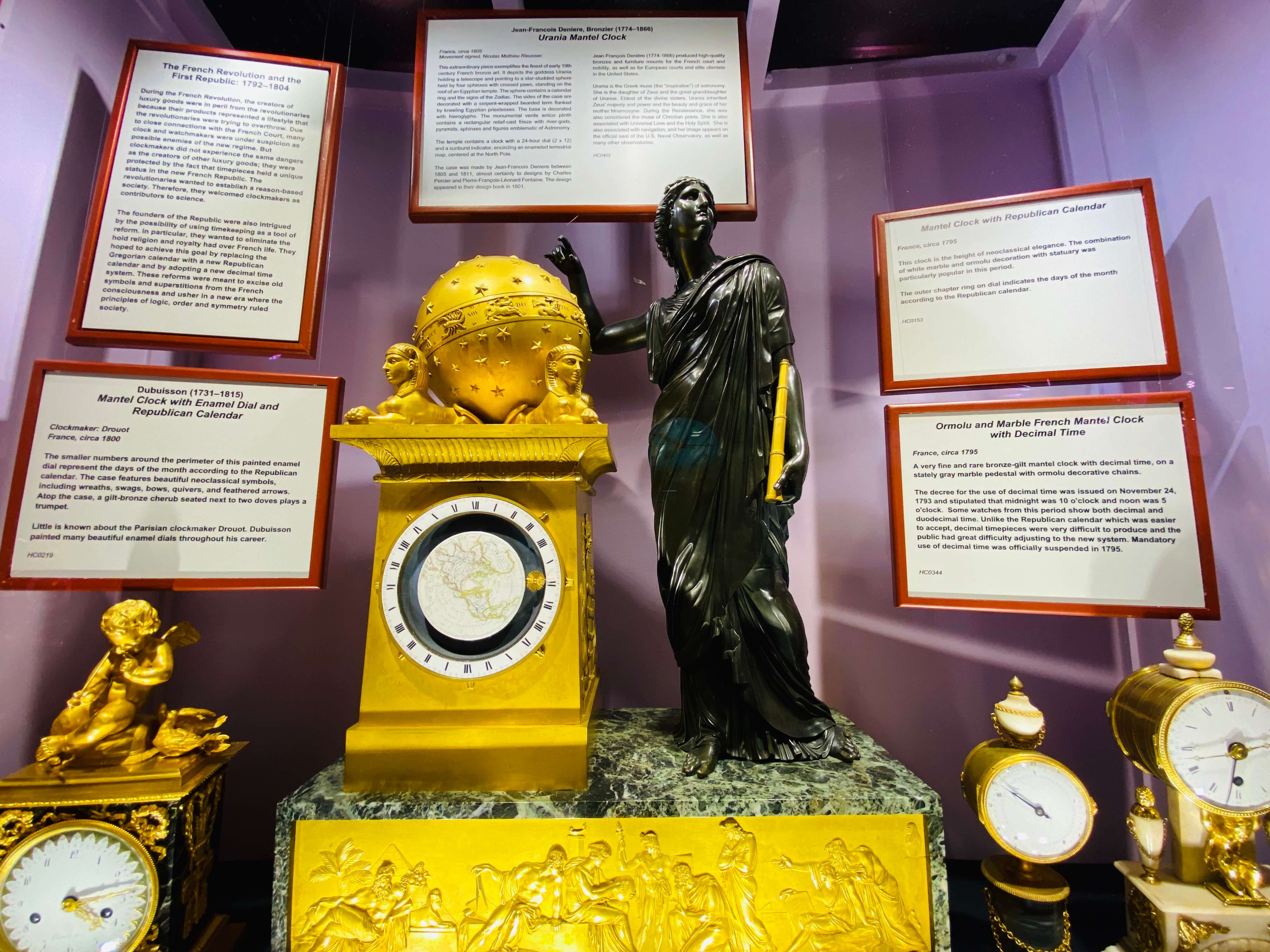
A French clock made in the wake of the Revolution. It depicts Urania (the Greek muse of astronomy) holding a telescope and pointing to a sphere with a calendar ring. As seen at the Halim Time & Glass Museum.
Returning to the time war of 2020. Unlike the clocks of Old Media, the subjective time zones of internet subcultures are a de-centralized creative expression that reflect the idiosyncrasies of many different reality tunnels. Whereas geographic time zones sit next to each other in a very orderly fashion, internet time zones are kaleidoscopic and multi-layered — they allow you to look back at the same time line through many different lenses. There are as many versions of history as there are subcultures.
The conversations of internet subcultures often feel substantive and expansive compared to the shallow discourse of presidential debates, op-ed pages, and cable TV shows. Mainstream news cycles rarely last more than a few hours, and their narratives are constantly shifting. They don’t tend to give a big-picture sense of where we came from or where we’re going. Internet subcultures, by contrast, are building grand narratives and meme worlds that help people feel their way through the chaos that’s currently unfolding. These stories cut deep, down to the most foundational questions of race and religion and destiny. We shouldn’t be too surprised that complex conspiracy theories, intergenerational trauma, and age-old religious fervor are coming to the fore — in a contest of narrative memes, deep history is a serious competitive advantage.
Digital media has re-shuffled the balance of power by making it easy for people to create historical narratives that attract lots of followers. The “time zones” of Old Media and internet subcultures are getting increasingly out of sync, despite attempts by the former to get out ahead of the latter. And the clocks and narratives of 20th century institutions lose influence in a media environment where everyday people can have the kind of reach that was once reserved for elites.
Ghosts in the digital graveyard
How does the immediate accessibility of so many alt histories undermine our ability to create shared visions of the future?
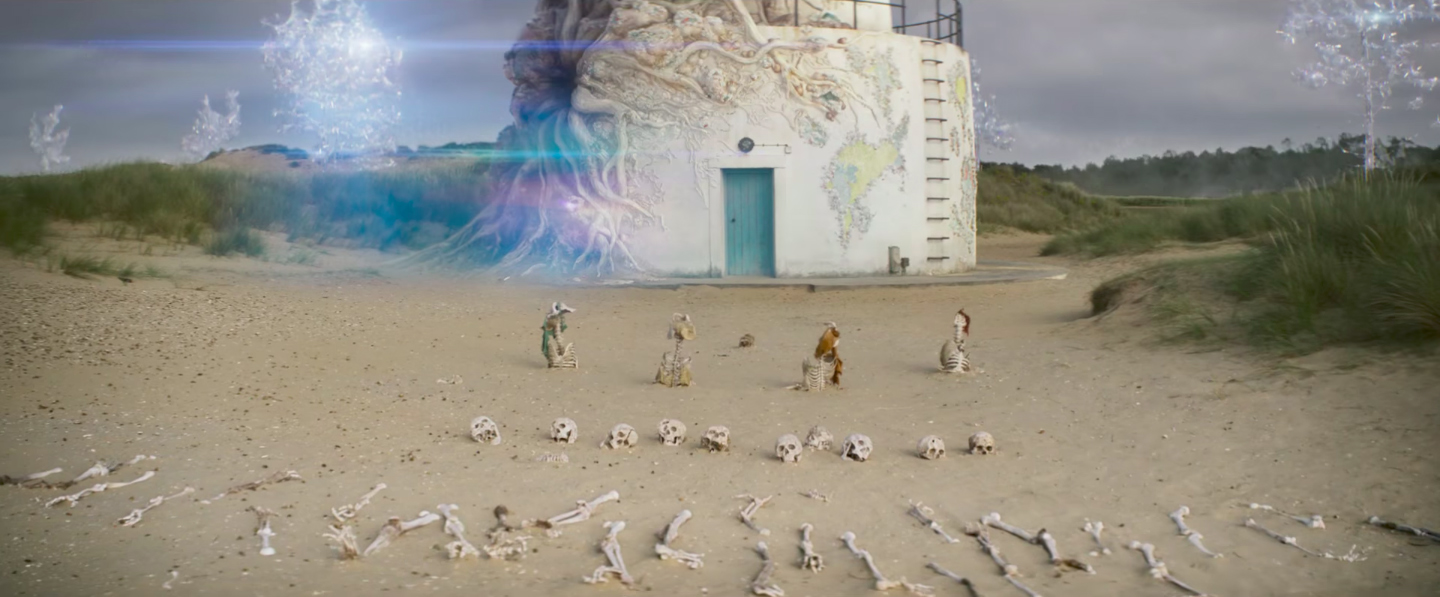
Annihilation (2018)
The explosion of alternative histories hasn’t just eroded the influence of 20th century media institutions, it’s also damaged our ability to build collective futures. We’re lost in the garden of forking memes, and the idea of linear progress along a single historical time line seems like a quaint artifact from a much simpler era. Grand visions of the future are few and far between; the pop cultural landscape is littered with post-apocalyptic dystopias. If we want to make sense of how we got here, we have to understand how the vast archive of the internet disrupted the feedback loop between memory and imagination.
Memory is the link between past and future; it allows us to learn from our previous experiences and extend our “narrative runways” beyond the immediate present. Imagining the future is just another form of memory. It’s a kind of forward-looking nostalgia. “The history of utopias is the history of rear-view mirrors. Every utopia is a picture of the preceding age.”3 If your memory gets scrambled, your ability to envision a coherent future is severely hampered. When the past feels slippery or shifty, you lose the “footholds” that give you the stability to think a day or even a few hours ahead at a time.4
The “perfect memory” of digital media has given rise to a kind of collective dementia that is scrambling our shared memories and messing with our shared imaginations/simulations of the future. The graveyard of data at our fingertips is not really memory as we’ve known it, and it’s not really history — it’s something new and chaotic, something eerily trans-human. The internet is like a time machine that’s bringing back the ghosts of our ancestors. (For the skeptics out there: think of a ghost as the remnants of information patterns that were once produced by a living person). And these ghosts have a lot of unfinished business (bones to pick, allies to avenge, scores to settle) that make it hard to move forward.
the internet is an inherently haunted place if you think about it like. it’s so weird to see long abandoned discussion boards stuck in a snapshot of the past, old conversations between kids from over a decade ago who have now grown into their own lives, obituaries taking the form of half finished profiles. and the silence that fills the gaps between. there’s a constant ghostly record of each generation’s thoughts, fads, their sense of humour. back when the future was at their fingertips. even stranger, people you used to know exist openly in that space, and they watch you watching them. if you want, deceased musicians can play through your headphones. there’s always an underlying sense of reminiscing and time escaping our ever shortening attention spans. what a fuckin graveyard
Thanks to the ghosts in the digital graveyard, our selves are strung out across extremely long stretches of time. The internet allows one body to ingest the memories of thousands, creating a new kind of interiority that’s almost superhuman in its scope. I probably come across more perspectives in a single Twitter session than my great grandparents heard in their entire lifetimes.
In a 1970 interview, Marshall McLuhan foreshadowed this situation and described what it might do to our minds: “We live in post-history in the sense that all pasts that ever were are now present to our consciousness and all futures that will be are here now. In that sense, we are post-history and timeless. Instant awareness of the varieties of human expression re-constitutes the mythic type of consciousness, of once-upon-a-time-ness, which means all-time, out of time.”5 The psychological shift that McLuhan saw on the horizon 50 years ago is now being felt all across the Web. The line between present and past is getting increasingly blurry now that we all carry around a miniature Library of Alexandria in our pockets. We can’t agree on where we’re headed because we can’t agree on when we are. 1619? 1968? 1918? 1346? The Gilded Age? The New Deal era? The Axial Age? The Dark Ages?
weird way to map your daily media consumption is to think about how much time you’ve traveled. e.g. tiktok in the morning plus mozart in the eve is a 200+ year span
— 🅐🅩🅛 (@aaronzlewis) January 19, 2020
would be interesting to see charts that show the most commonly “visited” eras by profession or geographic region pic.twitter.com/wSZaPO9Oxr
Of course, not everyone uses the internet to travel “back” in time. Plenty of people would rather watch funny cat videos. But, as Ezra Klein noted, there are already so many time travelers that the cultural and political landscape has been permanently transformed. We’ve stirred up old ghosts at Silicon Valley scale and find ourselves re-enacting age-old conflicts along age-old fault lines. “Perfect memory”, which once promised to save us by catching what we miss in real-time, pulls us out of the flow of time: “we’re constantly responding to information we’ve already responded to, to things that won’t disappear.”6 Before television and computers, information about the past felt more inert and static — sometimes literally set in stone. In the digital media environment, history is constantly being re-animated, re-mixed, and re-heated in the extremely molten medium of software.
If, as Marx once wrote, the grievances of all dead generations weighs like a nightmare on the brains of the living, the “perfect memory” of digital media has made this burden all the more weighty. Creating a stable political arrangement atop technologies of total recall will be a tall task. Our systems of governance were built for a world of extreme information asymmetry. Educated elites controlled the flow of information and kept old ghosts at bay. Now, the floodgates have been opened, and the Big Mood is one of temporal confusion and disorientation — we no longer feel like we’re marching steadily forward from the past into the future. There’s a massive subreddit devoted to documenting “glitches in the Matrix”; a new science of Progress Studies that’s trying to cure our End-of-History malaise; a whole entire subculture of Doomers who don’t believe there will be such a thing as history in the future.
That we are really dealing with a conflict of times, and not geo-political spaces, and therefore with a crisis of identity, is indicated by the propensity these days to preface all older terms with the prefix “neo-“. We have “neo-conservatism,” “neo-liberalism,” “neo-Marxism,” “neo-socialism,” and even “neo-fascism”. These are indications of identities in struggle and crisis, attempting to retain old relevancy, legitimacy, and identity in the face of the new Era presently in formation ... It’s just like jetlag, in some ways. Basically, as Shakespeare put it, “the times are out of joint.”
Digital media has done away with the very thing that created our sense of history: imperfect memory. The process of creating a historical narrative (or any story, for that matter) involves discarding an enormous amount of information. It’s like chipping away at a big block of marble until you’re left with a captivating statue. Forgetting is a feature, not a bug. It makes us feel like we’re moving forward through time, rather than standing still or running in circles. My grandmother and her ancestors knew this all too well. Artful forgetting, editing, and curation allowed them to craft narratives that helped their children understand the past and orient towards the future. The internet has undercut these time-tested practices of inter-generational knowledge transfer. It’s like an all-knowing god without any rituals of forgetting or forgiveness.
Faced with the inhuman prospect of total recall, we feel our only recourse is to turn to algorithms that help us sort through it all. But the algorithmic black boxes that power our media platforms work very differently than the memories we were born with. Our memories evolved to surface emotions, stories, and information from the past that might help us survive. We don’t have complete control over what we remember and when — there’s a subconscious system that “finds” old memories and “projects” them onto our mind’s eye.
In many ways, social media’s recommendation algorithms are an externalized version of this mysterious inner search process. But they’re not optimized to help us survive; they have a financial interest in prolonging our state of timeless confusion. Even the visual design of these platforms seems hell-bent on disorienting us: content that was published yesterday looks the exact same as content that was published a decade ago. In digital environments, there aren’t many signs of “decay” or the passage of time.
time hasn't been real since 2012. we can now travel to the past and future at will, by choosing whomst to follow.
— ⟆うꜾꞪ𐘉⏣NƐ (@suchaone) May 8, 2020
The algorithmic feeds that grew to prominence in the 2010s are a circus that set up shop in the lobby of the Library of Alexandria. As we spin round and round the carousels, everything seems to dissolve into an atemporal soup at the end of history. “History ends not when the stream of apparently historic events ends,” writes Venkatesh Rao, “but when the world loses a sense of a continuing narrative, and arrives at what psychologists call narrative foreclosure” — a hollowing out of the collective imagination, a sense of the future being cancelled. The ghosts of yesteryear float around the Cloud, hoping we’ll continue to embody their trauma, fight their battles, and live out their dreams and memes.
But maybe our ability to imagine collective futures hasn’t been damaged for good. The old ghosts don’t just haunt us, they also give us inspiration. Last time we saw this much history emerge from hibernation was in 14th century Italy, and the Renaissance was about to begin. Like those who came before us, we’re overwhelmed by the sheer quantity of memories and histories that are bubbling up to the surface. We’re still in the early days of the digital age, and I trust we’ll figure out how to adapt to the time machines we’ve built.
From star time to screen time
How might a more ecological awareness of the internet help us adapt to our disorienting digital time machines?

Fantastic Fungi (2020)
My parents' generation sometimes struggles with digital media because they remember what it was like to listen to the most trusted man in America deliver the news from his broadcast pulpit. They want blue checks and fact checks and information warnings — top-down control mechanisms that recall the singular authority of Cronkite’s narrative. Back then, television was promoted as “essentially live, as offering a direct connection to an unfolding reality ‘out there,’” says media theorist Wendy Hui Kyong Chun. But the multiversal collideorscope of digital media has made us hyper-aware that television does not really broadcast an un-edited view of reality straight into your living room. There’s always a producer and a camera and a frame and a cutting room floor, all of which determine what and how you see.
there’s something really refreshing about the way @olafureliasson breaks the 4th wall at the beginning of his Netflix interview. he brings the back stage to the front stage, makes the viewer feel more like a participant than a spectator pic.twitter.com/7YE2S0Bbm8
— 🅐🅩🅛 (@aaronzlewis) January 11, 2020
Just as the early viewers of television sometimes forgot that they weren’t seeing an un-mediated stream of Reality, us early users of digital media sometimes forget that social media algorithms are not showing us the world as it is. A recommendation algo is a “frame” that can be hacked, gamed, and messed with. More than anything, it’s a funhouse mirror that reflects back a warped image of whatever you hold up to it. The questions it thinks you’re asking, the answers it thinks you’re seeking, the things it thinks you care about, the narratives it thinks you believe in. “There are as many internet architectures as there are users,” says Louise Druhle. “Each of our clicks serves to sculpt the internet according to our own image.”
We’re transitioning from a world of linear narratives and time lines to a garden of forking memes that we’re free to explore and tend to. The gardening games with the richest soil, the deepest roots, and the most interesting characters will attract the most people.
But if there’s one thing that the pandemic has taught us, it’s that all of our virtual toys teeter precariously atop an infrastructural system that is currently under great threat (to say the least). Digital memory is material. The Cloud is made of rare earth. Lamps in video games use real electricity. In cyberspace, we’re constantly surrounded by simulations, abstractions, and pseudo-events that make it all too easy to forget about the geological stack that undergirds our virtual hall of mirrors. We forget that the garden of forking memes is rooted in the earth — in the underwater fiber-optic cables and server farms and electric “nervous systems” that connect us all together. Most designers and technologists try to hide the material complexity that lurks beneath the surface of the internet. They want it to be “indistinguishable from magic.” But if we continue to crop the earth (and the ecological crisis) out of the frame, we’ll soon cut off the very branch we’re sitting on. Without sustainable infrastructure, the digital garden will decay and disappear.

Louise Druhle's Critical Atlas of Internet shows that the internet is both the infrastructure that incorporates the globe and a single place shared worldwide.
In the past, our timekeeping systems were synchronized with the systems of the earth. The rhythms and seasons of nature help us orient and make sense of when we are. Digital media has warped our subjective sense of time and thrown us into a state of atemporal confusion. Aside from surface-level features like “dark mode,” digital temporality is blind to the natural cycles that shaped us and continue to sustain us.
Our earliest timekeeping devices linked us to the stars and the sun and the moon. Our digital time machines link us to an infinite supply of data and a multiverse of “subjective time zones” that are increasingly out of sync with the old, natural clocks. As Kei Kreutler points out, conventional calendars and time lines seem awfully out of date now that we are lost in a multi-temporal garden of forking memes. This dissonance between felt time and measured time gets more confusing by the day, and it’s beginning to feel unsustainable. Amidst the unsettling chaos, it’s tempting to crawl back to the time cage of the 20th century media environment. But we are as time travelers now, and we might as well figure out how to imbue our digital “clocks” with a more ecological, human-readable sense of time.
Thanks to Toby Shorin and Josh Morin for thoughts and feedback. If you have comments or questions about this post, please leave them here. And if you’d like to explore these topics further, you can check out the web of references that informed my thinking or join the New Time Machines Working Group.
New time machines
Circa Solar by @\_ted_hunt — a watch that fluctuates with the rhythm of the sun and seasons, includes a clever Mystery of Night feature where the hour hand disappears into the darkness to “enhance an appreciation of unknowing” https://t.co/jDbh6DEd7l pic.twitter.com/c9FdSsTG5G
— 🅐🅩🅛 (@aaronzlewis) May 23, 2020
"The present — day moon year" by Scott Thrift. Source
Response
July 12th, 2020: Toby Shorin wrote a public response to this post over on his blog, Subpixel Space. Click “Go to text” to read the full thing:
Aaron, I’ve been reflecting on your Garden of Forking Memes essay. I’m so glad you’ve written such a comprehensive piece on this topic of subculture and history, and I’m honored you asked me to provide feedback on it. It gave me a lot of thoughts that I wanted to flesh out, so I’m responding here. I’m most interested to talk with you about something we’ve discussed a bit before, something which is left implicit in your essay: the disappearance and now reappearance of the future as an idea, and the question of from where the actual future will come.
Footnotes
-
Holloway, Jonathan Scott. Jim Crow Wisdom: Memory and Identity in Black America Since 1940. University Of North Carolina Press, 2015.↩
-
King, Rachael Scarborough. Writing to the World: Letters and the Origins of Modern Print Genres. Baltimore, Johns Hopkins University Press, 2018.↩
-
McLuhan, Marshall, et al. The Medium and the Light: Reflections on Religion. Eugene, Or., Wipf & Stock, 2010.↩
-
McLuhan, Marshall. Open Mind Surgery – Full Lecture – Fordham University Tapes #3. 1967, youtube.com/watch?v=WFuZQxHynmY.↩
-
Elkus, Adam. Hic Sunt Dracones. 1 June 2020, aelkus.github.io/void/2020/06/01/opening.↩
-
Hui Kyong Chun, Wendy. “Crisis, crisis, crisis, or sovereignty and networks.” Theory, Culture & Society 28.6 (2011): 91-112.↩